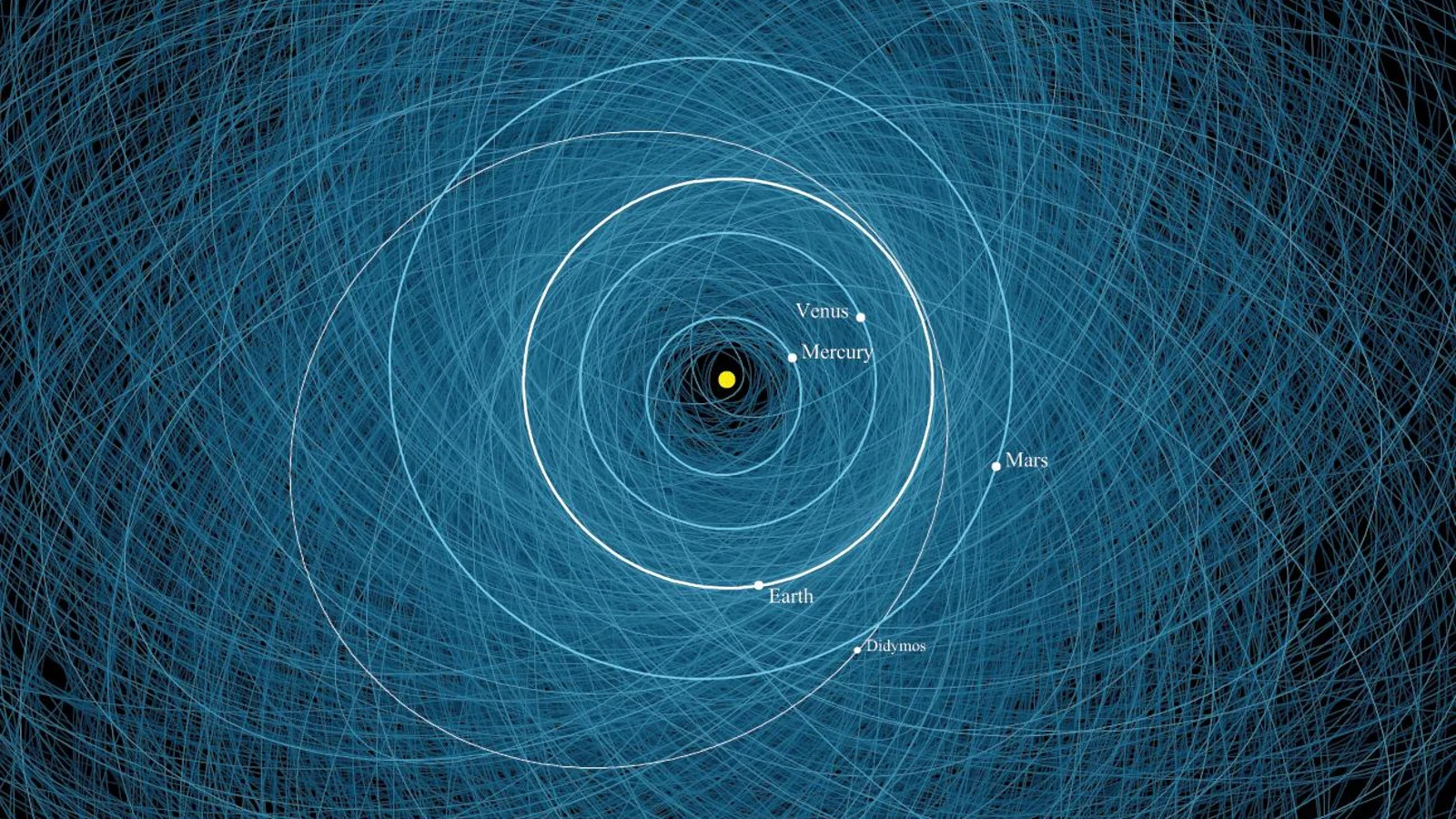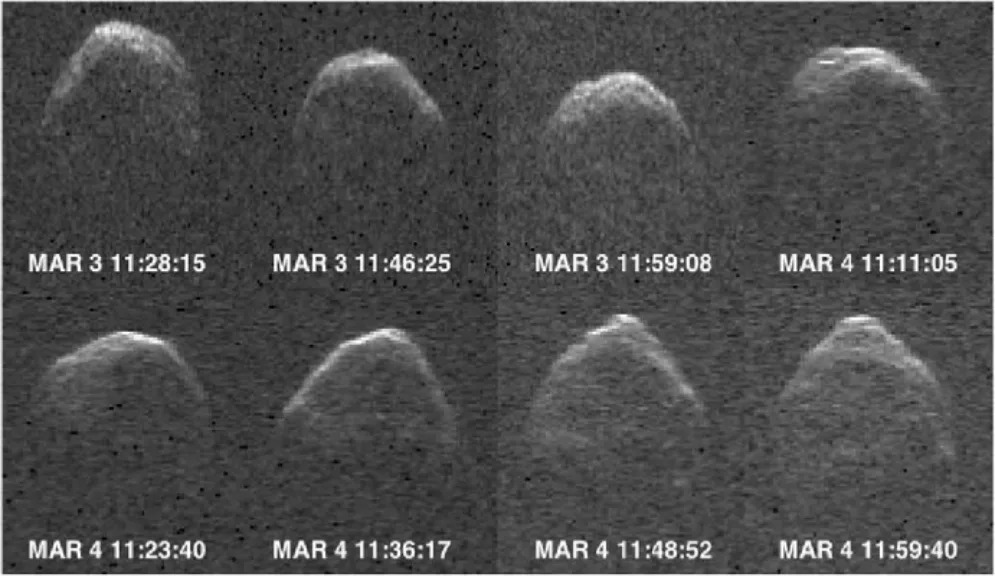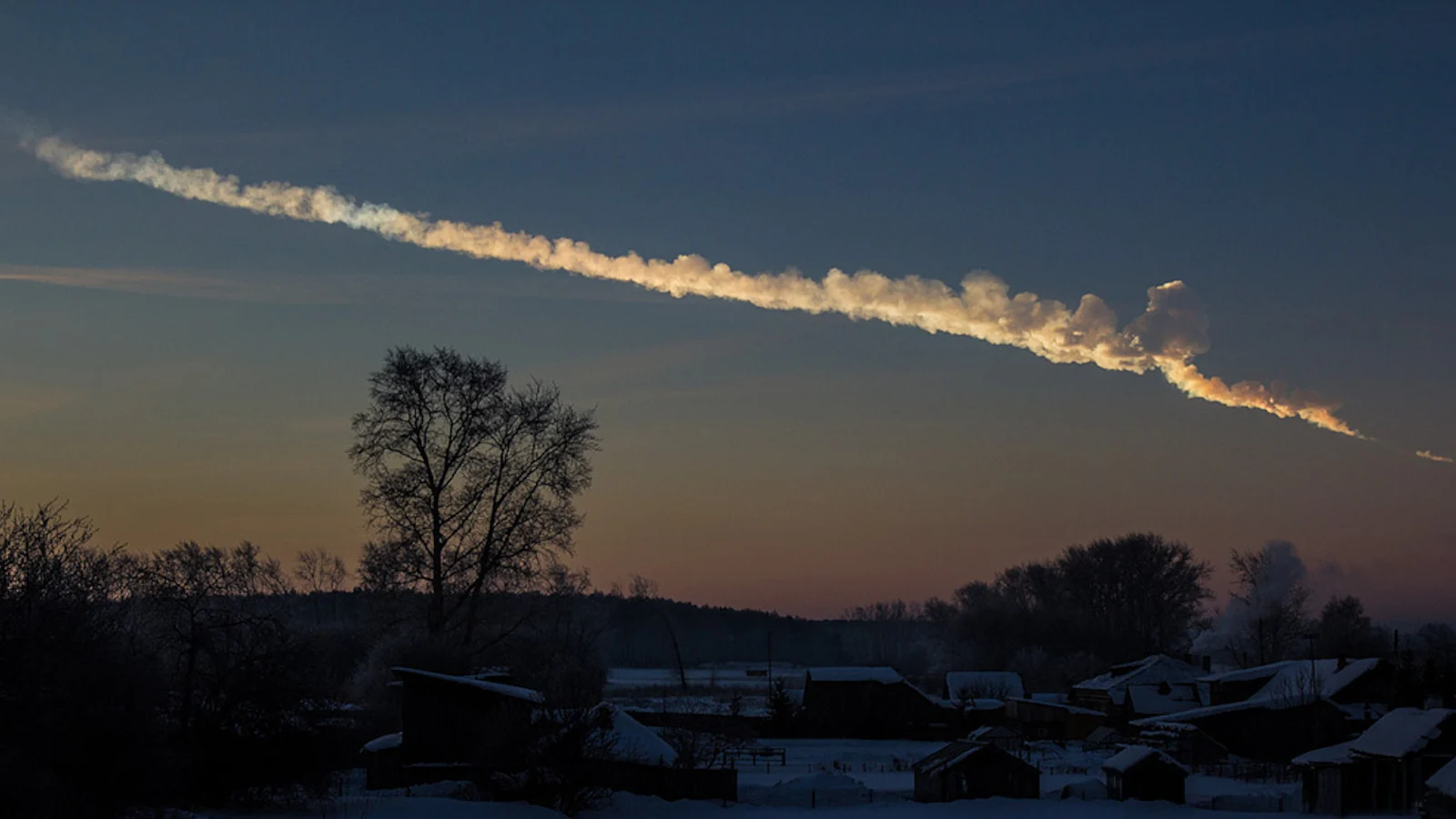
Good news! Earth is safe from planet-killer asteroids for the next 1000 years
By concentrating on when these giant space rocks get a bit too close to us, researchers were able to rule out any impacts for the rest of this millennium.
New research has revealed that we are safe from so called 'planet-killer' asteroids for at least the next thousand years.
To date, astronomers have discovered nearly 1.3 million asteroids, most of which are in the asteroid belt between Mars and Jupiter. Of the ones that stray beyond the belt, roughly 32,000 are considered near-Earth objects (NEOs) or near-Earth asteroids (NEAs). According to NASA, these are asteroids whose closest approach to the Sun is within 195 million kilometres, which brings them into our local 'neighbourhood' of the solar system.
Near-Earth asteroids come in a whole range of sizes, from massive 41-km-wide 1036 Ganymed down to ones just a few metres wide.

The orbits of all the near-Earth asteroids are shown here in relation to the orbits of the inner planets. The orbit of asteroid Didymos, whose moon, Dimorphos, was the target of NASA's DART mission, is highlighted. Credit: NASA/JPL-Caltech
Of particular interest, though, are the 2,336 asteroids found so far that are at least 140 metres wide and fly right through our backyard, coming to within 7.5 million kilometres of Earth (or about 20 times farther than the Moon). These are known as potentially hazardous asteroids.
The biggest potentially hazardous asteroids, those that measure over 1 kilometre in diameter, are unofficially known by another name — planet killers. These are asteroids so large, if just one of them were to strike Earth, it would do catastrophic damage on the scale of the impact that ended the reign of the dinosaurs. So far, NASA lists a total of 151 known 'planet-killer' PHAs.
READ MORE: NASA successfully crashed DART into asteroid Dimorphos
There's no need to worry, though! A new study out of the University of Colorado Boulder and NASA's Jet Propulsion Lab discovered that none of these 'planet killer' asteroids poses any threat to us for the foreseeable future!
"It's good news," Oscar Fuentes-Muñoz, the UC Boulder researcher who led the study, told MIT Technology Review. "As far as we know, there's no impact in the next 1,000 years."
Before this, the best assurance we had was that there were no potentially hazardous asteroids that threatened Earth for the next 100 years. "Assessing the impact risk over longer time scales is a challenge," the researchers state in their paper.
Essentially, even with the best observations, we can only know an asteroid's orbit so well. There is always some uncertainty involved, however small. The farther you look ahead in time without adding more observations, the larger that uncertainty grows. Eventually, once you look past a century or two, it's impossible to know exactly where the asteroid will be along its orbit.
However, for their research, Fuentes-Muñoz and his colleagues found a new way to calculate asteroid impact risk.
"We came up with a less computationally intense approach to take a peek at a longer time interval," study co-author Davide Farnocchia, who is a navigation engineer at NASA's Jet Propulsion Laboratory, told MIT Technology Review.

These images of asteroid 29075 (1950 DA) were taken using the Arecibo radio telescope, which bounced radar waves off the asteroid. 29075 (1950 DA) is one of the top threats on NASA's Sentry Impact Risk list, but only for one potential impact in the year 2880. Credit: Arecibo Observatory/NASA/NSF
Each time a potentially hazardous asteroid flies past Earth, it has a closest approach distance — what NASA calls the Minimum Orbit Intersection Distance. MOID is typically measured in 'astronomical units', with one AU equal to around 150 million km, or the average distance between the Earth and the Sun. A MOID of 0.05 or less is needed for an asteroid to be classified as potentially hazardous, while a MOID of less than 0.0025 would have an asteroid passing by within the orbit of the Moon.
There is still some uncertainty with MOID over time, but according to the study, that uncertainty grows more slowly compared to looking at an asteroid's overall position. So, you can use this to look further into an asteroid's future to see if it poses a threat.
Looking at a minimum distance of just 1.5 million kilometres (or about 4 times farther than the Moon), the researchers identified several asteroids larger than 1 km that 'hang out' in that zone over time, some for thousands of years. That is, these asteroids pass within that 1.5-million-km distance on repeated flybys, with their exact MOID changing slightly each time.
By examining how the minimum distances of these asteroids changed from flyby to flyby, the team was able to rule out any impacts from these planet-killers between now and the year 3000.
DON'T MISS: Saturn is the new 'Moon King' of the solar system
Kilometre-scale asteroids represent civilization-ending threats, but smaller asteroids are still a danger to us.
The object that exploded over Chelyabinsk, Russia, in February 2013, was estimated at around 20 metres wide before it slammed into the atmosphere. The explosion, which took place some 30 kilometres up, shattered thousands of windows across the city and injured over 1,600 people.

This picture captures the smoke trail left behind in the air by the Chelyabinsk impactor, as it passed from left to right across the field of view. Credit: Alex Alishevskikh (CC-BY-20)
On June 30, 1908, another object — possibly a 65-metre-wide asteroid — exploded over Tunguska, Siberia. The blast from it levelled trees over an area of 2,150 square kilometres. If it had occurred over a more populated area, it would have been a city killer, causing enough damage to equal a 12-megaton nuclear bomb.
With these smaller objects still posing a threat to us, the researchers believe the next step is to scale down their new method to use with these smaller potentially hazardous asteroids, or possibly the entire population of near-Earth objects.
"The long-term hazard ranking could be made available to the planetary defence community," the study concludes, "as the most hazardous NEOs should be objects of interest for more detailed observations and future exploration missions."
Editor's note: A previous version of this article implied that 525-km-wide Vesta was the closest near-Earth asteroid. 4 Vesta is located in the asteroid belt between Mars and Jupiter and never comes closer to Earth than 170 million kilometres. The largest near-Earth asteroid is 41-km-wide 1036 Ganymed. We apologize for any confusion.
(Thumbnail image courtesy Videoblocks)











